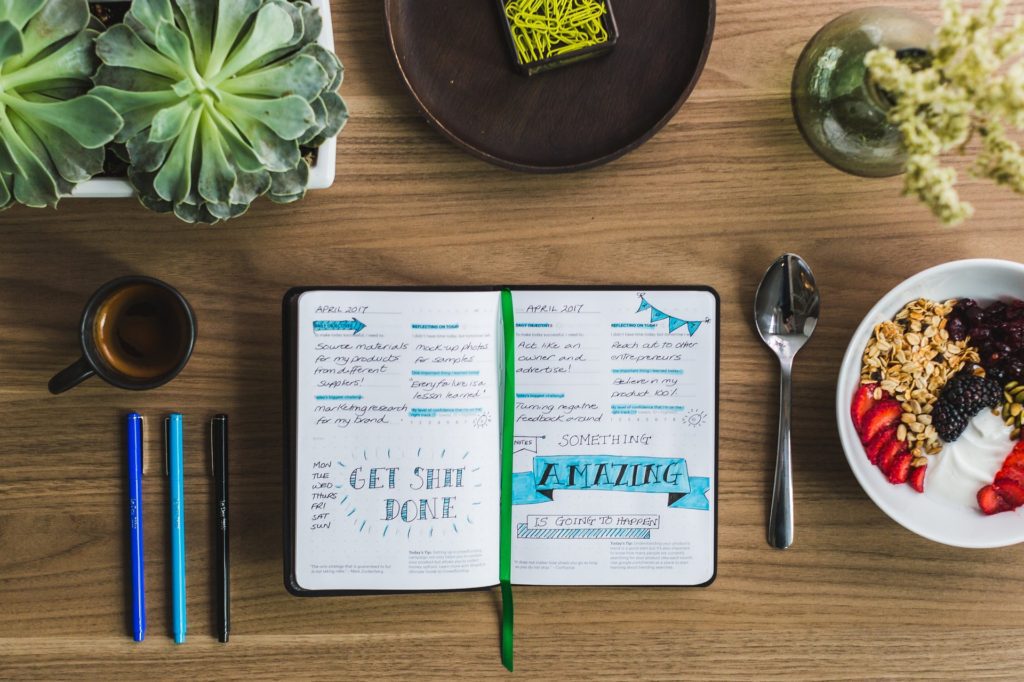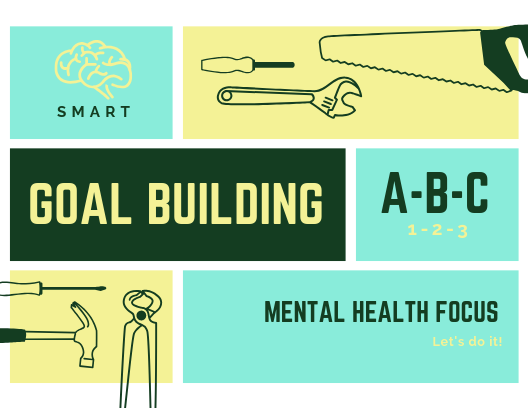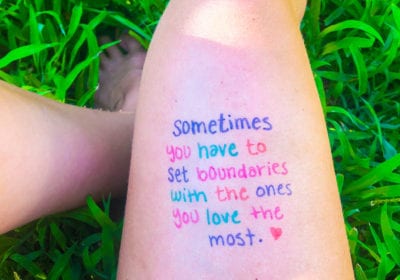
The term “wellness” gets tossed around frequently, but what does it really mean? Wellness is not just about reducing symptoms but about continually improving your state of being.
According to the World Health Organization, health is “a state of complete physical, mental and social well-being and not merely the absence of disease or infirmity.”
Building a wellness routine focused on mental health takes time. However, any task becomes more attainable when you deconstruct the final goal (here, relieving anxiety) into smaller steps.
Wellness focused goals in life can be created to both reduce symptoms and leverage your strengths.
Let’s dive in to gain an understanding of wellness, the importance of goal setting, and learn how to set actionable goals.
What is wellness or well-being?
Wellness – the quality or state of being in good health especially as an actively sought goal.
Merriam-Webster Dictionary
Wellness is an active process through which people become aware of, and make choices toward, a more successful existence.
The National Wellness Institute
Mental health is defined as a state of well-being in which every individual realizes his or her own potential, can cope with the normal stresses of life, can work productively and fruitfully, and is able to make a contribution to her or his community.
World Health Organization
Wellness is an active process of becoming aware of and making choices toward a healthy and fulfilling life. Wellness is more than being free from illness, it is a dynamic process of change and growth.
UC Davis
What these definitions have in common is that wellness is an ACTIVE process. It is a journey, not a destination. Meaning a continual effort towards being a stronger and healthier person.
Wellness, like fitness, requires determination and consistency to obtain desired results. Nobody sitting on the couch, eating potato chips, expects to be fit.
Comparatively, if you aren’t practicing wellness, you should not expect to be able to work through your anxiety seamlessly. This is a beautiful thing. You always have an opportunity to better your practice and subsequently better your mind.

Setting Goals in Life for Mental Health
There are two schools of thought in mental health service. One is recovery, which focuses on symptom reduction. It uses negative psychology since it actively pursues the reduction of negative experiences.
The second school focuses on positive psychology, which uses an individual’s strengths to manage symptoms when they occur.
These don’t have to be exclusive of one another but rather you can build a plan that is inclusive of both. Set goals using positive thinking to increase your sense of well-being, while also tackling symptoms you feel daily.
Both approaches have found reasons why goal setting is important to:
- Achieve positive outcomes
- Improve your ability to prevent life stressors
- Reduce and positively handle obstacles
*Tip* Anxiety Toolkit Podcast Episode 49 has been a great resource to help me change my relationship with anxiety. I have used its tactics on many occasions.
How to Identify your Wellness Goals
An easy way to identify your strengths and triggers is through a 5-minute anxiety journal. To get a quick snapshot keep one for a week.
For deep analysis, journal for a month or two. This helpful resource has an anxiety journal template and a goal discovery tracker. A note-taking app on your phone is a good option as well.
Review your recordings. Analyze what strengths you may have, for example, positive self talk or eating a healthy diet. Also analyze your triggers, for example driving at night or large groups of people. Now pick 2 strengths and 2 triggers. These will be the basis of the goals you will build.
How to discover what goals you should set?
Journal the following for about 5 minutes a day
- Anxiety Level:
Select either low, medium or high (or a combination of the two)
ex. low to medium: feeling calm with some moments of anxiety
medium to low: felt average anxiety with some calm moments - Explained:
Brief explanation of why you chose the above anxiety level
- Supplements:
Anything you took to aid your diet or mental state
ex. vitamins, herbs, teas, etc. - Self Care:
Any action that you did for you.
ex. exercise, aromatherapy, meditation, positive self talk, quiet time - Diet:
List what you ate for the day

Main Components of an Actionable Goal
What does an actionable goal look like? Let’s start with a basic goal structure – S.M.A.R.T. goals.
- SMART Goals
- Specific ; Be clear/concise about what it is you want to achieve
- Measurable ; Use numbers and metrics
- Achievable ; A challenge but not too difficult
- Relevant ; Both personal and related to wellness
- Time Bound ; In 1 month, in 2 weeks, in 2 months, etc.
Goals Specific to Behavior Change or Mental Health
Talk to a loved one and set wellness goals together. Group goals that are challenging and set publicly are shown to increase the likelihood of achievement, noted by one review of 141 behavioral change studies.
No partner? Then find somebody to talk with for accountability. Setting short term goals, in mental health, structured for genuine face-to-face feedback can support goal outcomes, as well.
A summary of aspects of successful behavioral change or mental health goals are:
- Group Goals
- Challenging
- Set Publicly
- Short term
- Structured for immediate, genuine feedback
Examples of Wellness Goals
Recovery Focused
Basic Goal: I want to exercise to be calmer.
Actionable Goal: I will exercise 5 times a week for the next month while documenting progress in a weekly journal to reduce my resting anxiety level.
Action Plan: I want to exercise 5 times a week for the next month through weight training, HIIT, cardio or yoga. The purpose is to to reduce symptoms of anxiety. I will journal once a week to review my emotional state and anxiety levels from an unbiased viewpoint. I will express this goal with 2 loved ones and ask them to join. We will give face-to-face (or facetime) feedback to one another weekly.
Positive Thinking Focused
Basic Goal: I want to use positive self talk to help me work through triggering events.
Actionable Goal: I will practice my selected breathing exercises when triggered while driving for the next month to help work through stressful situations and increase my well-being.
Action Plan: I will practice my selected breathing exercises when triggered by a driving scenario for the next month. The purpose is to build a calmer mental state while driving. I will journal once a week to review my emotional state and anxiety levels from an unbiased viewpoint. I will express this goal with 2 loved ones and ask them to join. We will give face-to-face (or facetime) feedback to one another weekly.



